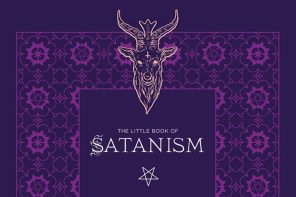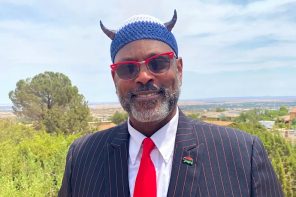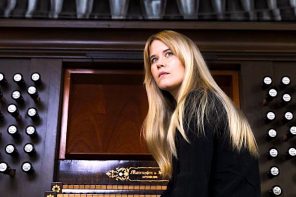On October 20, the murder trial of self-proclaimed Satanist Mark Dobson will resume in Barrie, Ontario. On May 2, 2012, Dobson was discovered in a hotel room where he had drugged and killed two female acquaintances—his girlfriend and an older woman he called “mom.” He had also attempted to take his own life and allegedly told the shocked hotel staff, “I did it, it was a satanic cult thing.”
Dobson’s attorney has found three psychiatrists to testify that Dobson was not criminally responsible because he was psychotic and schizophrenic. However, Dr. Andriy Kolchak, a psychiatrist for the prosecution, has argued that Dobson was performing a ritual in accordance with his religious beliefs, and therefore was not mentally ill.
In an eerily similar case, Pamela Christensen of Montgomery, Illinois, is awaiting trial for attempting to kill her three daughters so they could “meet Jesus Christ.” Like Dobson, Christensen tried to drug and stab her loved ones before attempting to kill herself. Christensen claimed she was responding to a phone call from her husband, a pastor, who announced that the world was ending and to get the family ready.
Cases such as this raise questions that have long gone unanswered about how the state should define “religion.” By what criteria should we decide whether deviant beliefs and actions are an expression of religion or evidence of a medical problem?
Dr. Kolchak points out that Dobson was not a lone psychotic and that his victims shared his beliefs. The three apparently met through the online organization “Joy of Satan,” and Kolchak argues that murders resembled rituals described on the website. According to Dobson, the three had gone to the hotel room to perform a death ritual so that they could travel to “another galaxy.”
“Joy of Satan” promotes “theistic Satanism” and is an extremely fringe group even among Satanic organizations. Its website is rife with comments that are openly anti-Semitic and anti-Christian—but it does not advocate murder. One essay explains that Satanism “is not about human sacrifice,” and another insists that, “Satan never murdered anyone.” An essay on the afterlife contains no mention of other galaxies but does describe hell as a “safe place.” Satanists, it claims, will be escorted to hell by protector demons and treated as “VIPs.”
This may have been an appealing idea to Dobson, who claims he attempted suicide to escape demons that were tormenting him nightly. However, “Joy of Satan” discourages suicide, warning, “The Powers of Hell want us to live. The enemy tries to get people to commit suicide.”
Whether or not Dobson’s crimes have any basis in his interpretation of the Joy of Satan website, they were certainly deviant and unprecedented. If Christensen makes an insanity plea, it is less likely to be challenged. Like Dobson, she also claims to have been undergoing mental stress prior to her crimes. She had recently placed a restraining order on her husband, whom she claims had become erratic and violent. However, as she is Christian, an insanity defense would not revolve around whether murdering one’s children is a normal expression of Christensen’s religion.
No one would quote Luke 23:29, “Blessed are the childless women,” and claim that Christensen was exhibiting a normal Christian response to news of the apocalypse.
Elsewhere, I have written on the case of John Errol Ferguson, a schizophrenic murderer in Florida, who claimed that upon his execution he alone would be seated at the Right Hand of God before being resurrected to save America from a communist plot. Under federal law, the mentally ill cannot be executed—psychiatrists had even identified a fissure in Ferguson’s brain consistent with schizophrenia. However, Florida’s eighth circuit ruled that Ferguson’s delusions were not substantially different from ordinary Christian beliefs.
In 2013 Ferguson was executed under the legal pretext that he was not mentally ill, but simply a murderous Christian.
From a critical perspective, it seems untenable to assume that the categories of “religion” and “insanity” are mutually exclusive. And yet legal claims often assume that these two categories are neatly separate. Partly because of this assumption, the “religion or insanity” question often amounts to a game of “heads I win, tails you lose,” in which whatever interests are more established get to make the rules as they go along.
There is a larger pattern in which deviant religious groups are deemed insane when they invoke their religious rights while deviant criminals are deemed religious when their lawyers make insanity pleas. Whatever happens in the trials of Dobson and Christensen, let us hope for a more logically consistent approach to this problem.
Ad-hoc definitions and fuzzy logic are the natural allies of hegemony, not justice.





